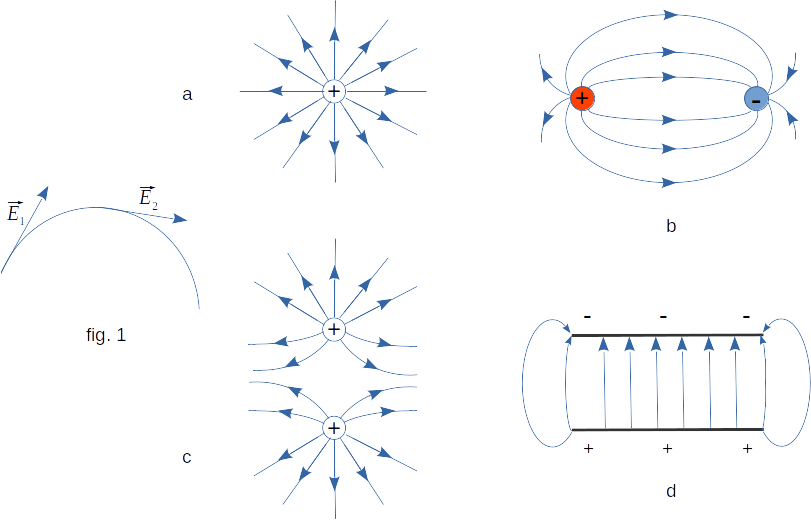From the Electrostatics
71. Power lines of Electric field
For visual qualitative characteristics of electric field distribution in space the concept of power lines of electric field is introduced. The power line of the electric field is a line, tangent to which in each point coincides with the direction of the strength in this point (fig. 1). Any number of power lines can be drawn in space.
One should not think that the power lines are actually the existing formations like stretched elastic threads or cords, as Faraday himself suggested. They are a visual way of describing field distribution and are no more real than meridians and parallels on the globe.

However, the power lines can be made "visible". If the oblong dielectric crystals ( for example, quinine - malaria drugs) are well mixed in a viscous liquid (for example, in a castor oil), then near the charged bodies, these crystals will line up into chains that give an idea of the power lines of the electric field. Examples of power lines are shown in the figures:
a) the charged sphere (fig. 1a);
6) two equal charges of the opposite sign (fig. 1b);
c) two charged spheres of the same sign (fig. 1c);
d) two plates, charges of which are opposite in the sign (fig. 1d).
In the center of the plate system, away from the edges, the power lines are almost strictly parallel. The electric field here is uniform, i.e. equal in all points.
The power lines of the electrostatic field start at positive charges and end at negative charges or go to infinity. The lines do not intersect, as their intersection would mean that there is no particular direction of the electric field at a given point. The density of power lines is greater where the field strength is greater.